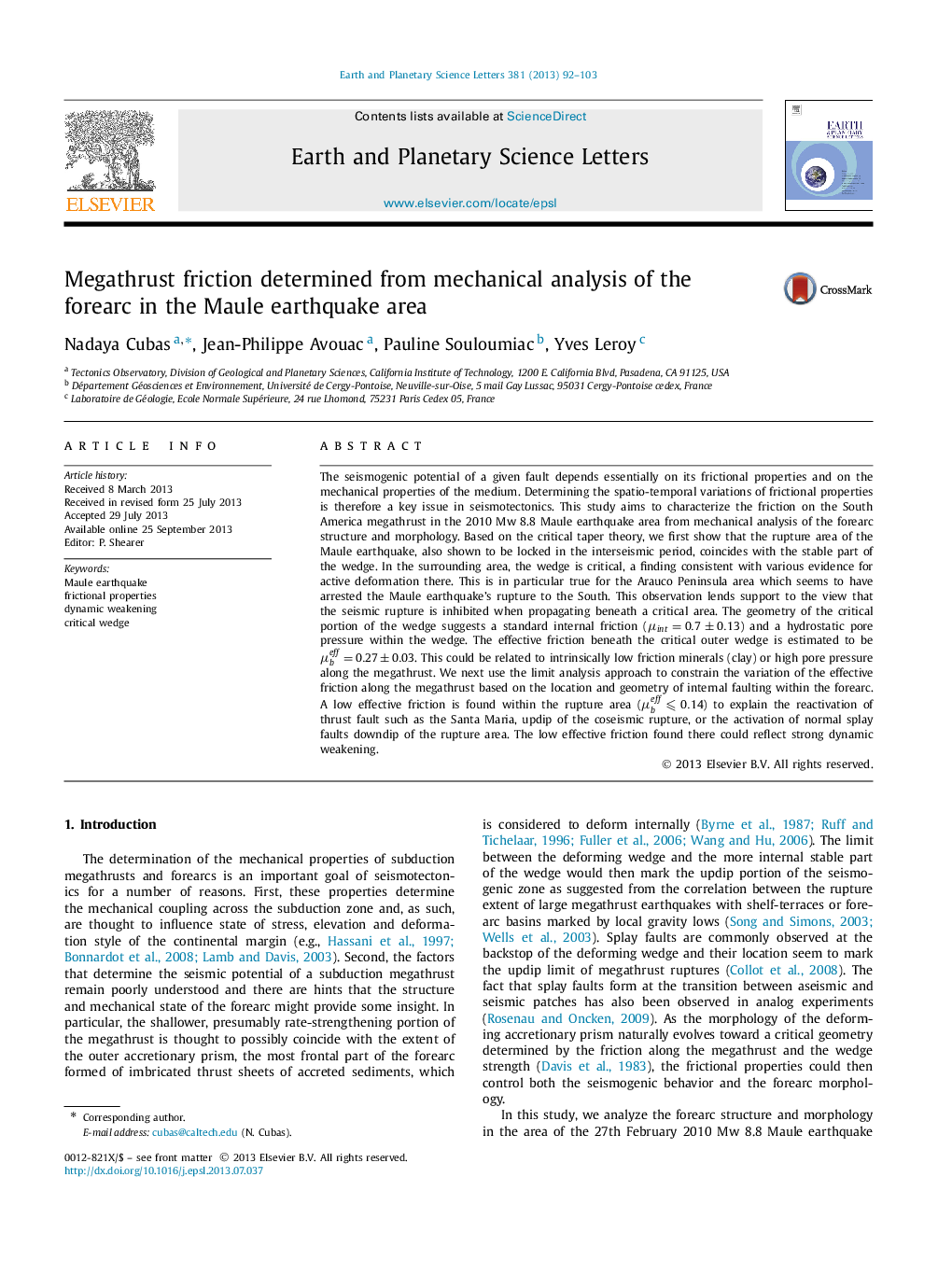| کد مقاله | کد نشریه | سال انتشار | مقاله انگلیسی | نسخه تمام متن |
|---|---|---|---|---|
| 6429714 | 1634775 | 2013 | 12 صفحه PDF | دانلود رایگان |

- From mechanical analysis of the forearc, we retrieve the friction along the Maule megathrust.
- We observe a correlation between critical and aseismic zones.
- We find an intermediate effective friction along the accretionary wedge.
- A low effective friction in the seismogenic zone probably due to dynamic weakening.
The seismogenic potential of a given fault depends essentially on its frictional properties and on the mechanical properties of the medium. Determining the spatio-temporal variations of frictional properties is therefore a key issue in seismotectonics. This study aims to characterize the friction on the South America megathrust in the 2010 Mw 8.8 Maule earthquake area from mechanical analysis of the forearc structure and morphology. Based on the critical taper theory, we first show that the rupture area of the Maule earthquake, also shown to be locked in the interseismic period, coincides with the stable part of the wedge. In the surrounding area, the wedge is critical, a finding consistent with various evidence for active deformation there. This is in particular true for the Arauco Peninsula area which seems to have arrested the Maule earthquakeʼs rupture to the South. This observation lends support to the view that the seismic rupture is inhibited when propagating beneath a critical area. The geometry of the critical portion of the wedge suggests a standard internal friction (μint=0.7±0.13) and a hydrostatic pore pressure within the wedge. The effective friction beneath the critical outer wedge is estimated to be μbeff=0.27±0.03. This could be related to intrinsically low friction minerals (clay) or high pore pressure along the megathrust. We next use the limit analysis approach to constrain the variation of the effective friction along the megathrust based on the location and geometry of internal faulting within the forearc. A low effective friction is found within the rupture area (μbeff⩽0.14) to explain the reactivation of thrust fault such as the Santa Maria, updip of the coseismic rupture, or the activation of normal splay faults downdip of the rupture area. The low effective friction found there could reflect strong dynamic weakening.
Journal: Earth and Planetary Science Letters - Volume 381, 1 November 2013, Pages 92-103